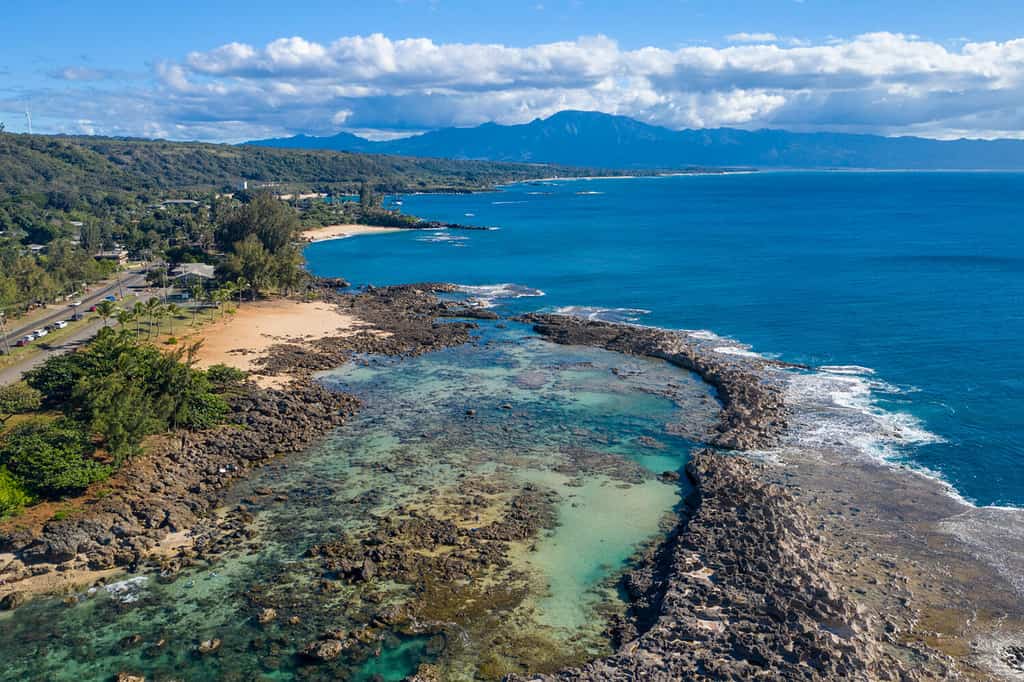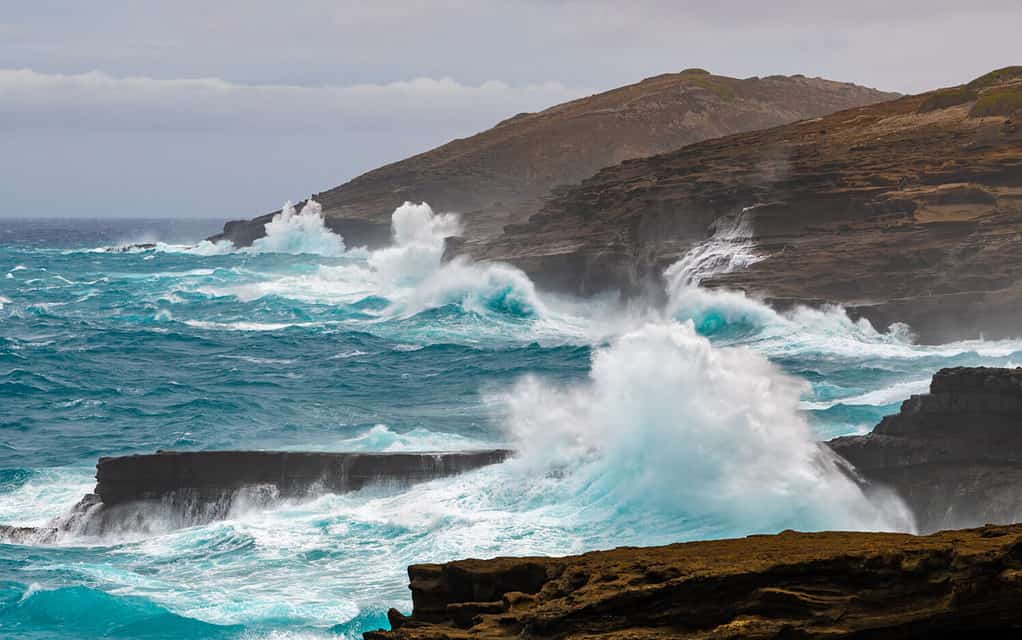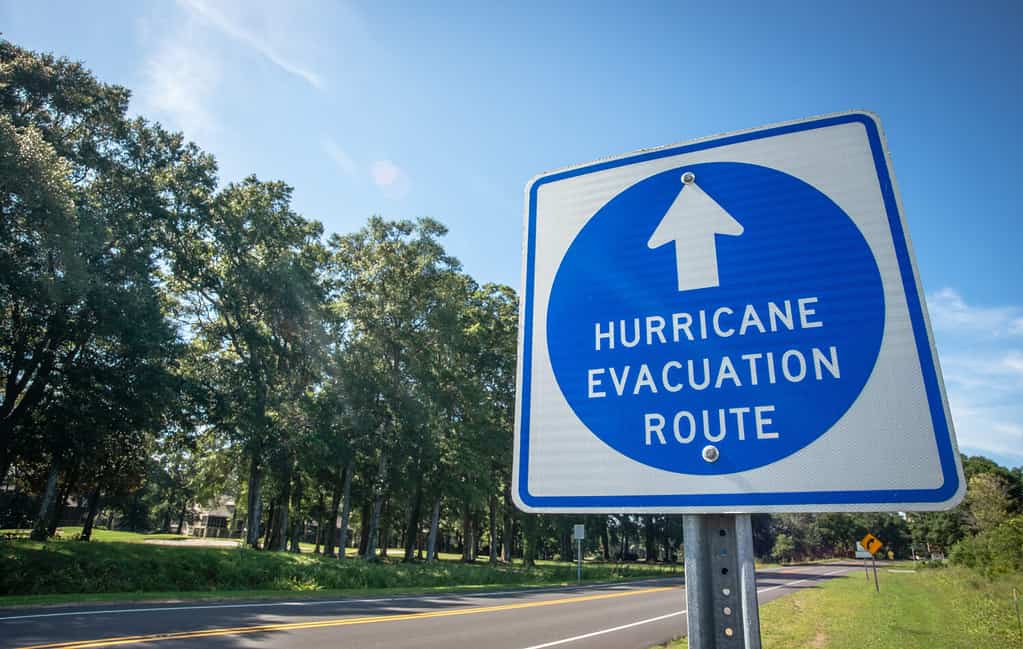Hawaii is a tropical paradise nestled in the heart of the Pacific Ocean. While known for its breathtaking landscapes, rich culture, and warm climate, this idyllic destination is not immune to the powerful forces of nature, including hurricanes. Understanding the nuances of Hawaii’s hurricane season is crucial for residents, policymakers, and those who cherish the islands’ natural beauty.
Hurricane Development in Hawaii
In Hawaii, a hurricane follows a sequence of conditions that are favorable to its formation and intensification. Warm ocean waters play a central role in this process. As the Pacific Ocean’s waters heat up during the summer months, they provide the necessary energy for the evaporation of water. This leads to the creation of moist air masses. These warm and moist air masses then rise from the ocean’s surface, creating an area of low pressure.
As the warm air rises and cools at higher altitudes, it condenses, forming clouds and releasing latent heat. This release of heat further fuels the rising air and causes it to continue ascending. This process initiates the formation of a rotating system of clouds and thunderstorms, creating what is known as a tropical depression.
As the tropical depression moves over the warm ocean waters, the continued inflow of moist air and heat energy from the ocean further intensifies it. If the winds around the depression reach a certain threshold and the atmospheric conditions remain favorable, the system strengthens into a tropical storm.
If the tropical storm continues to gain energy from the warm waters and the release of latent heat, it can further intensify into a hurricane. The heat energy stored in the ocean water serves as the “fuel” for the hurricane’s growth. It allows it to develop a well-defined eye accompanied by strong winds and heavy rainfall.

Hawaii’s location in the Pacific makes it prone to the impacts of hurricanes.
©Danita Delimont/Shutterstock.com
Role of location
Hawaii’s geographical location in the central Pacific means that hurricanes can develop both in the eastern and central Pacific basins. The Hawaiian Islands are not directly in the pathway of most hurricanes. However, they can still be affected by the outer bands of these storms. This can lead to strong winds, heavy rainfall, and potentially dangerous conditions. Therefore, Hawaii’s residents and authorities closely monitor the development of hurricanes. They must take proactive measures to ensure preparedness and safety during the hurricane season.
Hurricane Season in Hawaii: Start to End
In Hawaii, hurricane season stretches from June 1st to November 30th, aligning with the broader Atlantic hurricane season. While Hawaii is located in the central Pacific Ocean, it still experiences the impacts of tropical cyclones. These include hurricanes that form and move through the region. Despite being far removed from the Atlantic coast, the state’s geographical position makes it susceptible to the influence of Pacific hurricanes. These can originate in both the eastern and central Pacific basins.
Hawaii’s unique weather patterns and oceanic environment contribute to the occurrence of hurricanes during this period. Warm ocean waters provide the necessary heat energy for tropical cyclones to form and intensify. The waters of the Pacific Ocean reach their warmest temperatures during the summer months. This makes them conducive for the development of hurricanes and tropical storms.
It’s important to note that while the official hurricane season spans from June to November, the frequency and intensity of hurricanes in Hawaii can vary from year to year. Not every year sees the same level of hurricane activity. Some years may remain relatively uneventful, while others might see heightened activity.
Hawaiian authorities and communities are well aware of the risks posed by hurricanes. Even though hurricanes don’t hit the state as frequently, they have the potential for strong winds, heavy rainfall, storm surges, and flooding. In response to this, authorities have developed comprehensive preparedness plans, including evacuation protocols, emergency shelters, and public education campaigns. Residents should also stay informed through weather alerts and advisories, especially during the active hurricane season.

During the peak season in the summer months, islands like Oahu in the state face major dangers.
©Phillip B. Espinasse/Shutterstock.com
Peak Hurricane Activity in Hawaii
Peak hurricane activity in Hawaii typically occurs during the warm summer months, from July through September. This period aligns with the prime conditions for hurricane formation in the central Pacific region. As ocean temperatures rise during these months, the Pacific Ocean becomes a fertile breeding ground for tropical storms.
While Hawaii is relatively remote from the main hurricane tracks of the Atlantic, the central Pacific basin can still generate hurricanes that pose a potential threat to the islands.
The months of August and September tend to witness heightened hurricane activity. During these months, there is the highest likelihood of strong storms affecting the state. Hawaiian authorities and communities remain vigilant during this peak period. They implement preparedness plans, closely monitor weather systems, and issue timely alerts to ensure the safety of residents and visitors alike.
Latest Hurricanes in Hawaii
Hurricane Douglas was the last hurricane to hit Hawaii in 2020. However, there are several other hurricanes that have affected the state.

Douglas was the latest hurricane to hit Hawaii, but hurricanes are relatively frequent in the state.
©Evgeniyqw/Shutterstock.com
Hurricane Douglas (July 2020)
Hurricane Douglas was a powerful Category 1 hurricane that approached Hawaii in July 2020. While it eventually passed just north of the islands, it brought heavy rainfall, strong winds, and high surf to parts of the state. Although the direct impact was relatively minor, the potential threat prompted residents to prepare for possible impacts.
Tropical Storm Iselle (August 2014)
Tropical Storm Iselle made landfall on the Big Island of Hawaii in August 2014. It was a significant event as it was the first tropical storm to directly impact the state in over two decades. Iselle brought heavy rainfall, strong winds, and power outages to parts of the Big Island. Hurricane Julio followed it closely and weakened before passing north of the Hawaiian Islands.
Hurricane Ana (October 2014)
In October 2014, Hurricane Ana passed near Hawaii as a Category 1 hurricane. While it did not make landfall, it brought heavy rainfall, particularly to the islands of Maui and Oahu. The storm caused flooding and landslides in some areas and had some impact on local communities.
Hurricane Lane (August 2018)
Hurricane Lane was a powerful hurricane that posed a significant threat to Hawaii in August 2018. Although it ultimately did not make direct landfall, it passed close enough to bring intense rainfall, particularly to the Big Island. This heavy rainfall led to widespread flooding and landslides, prompting evacuations and emergency responses.
Tropical Storm Olivia (September 2018)
Shortly after Hurricane Lane, Tropical Storm Olivia approached Hawaii. While it was not as intense as Lane, Olivia brought heavy rainfall and strong winds to the islands. The storm caused localized flooding, road closures, and power outages, particularly on Maui and the Big Island.

Residents must prepare to stay safe against hurricanes, especially during the peak season.
©Darwin Brandis/Shutterstock.com
Preparedness and Resilience in Hawaii Against Hurricanes
Hawaii’s residents, policymakers, and emergency management officials are well-versed in the art of preparedness and resilience. Aware of the potential risks posed by hurricanes, they have developed comprehensive strategies to minimize the impact of these storms on communities and infrastructure.
Early Warning Systems and Technology
Advancements in meteorological technology have significantly enhanced the accuracy of hurricane forecasts. Sophisticated computer models, satellite imagery, and data collection systems enable meteorologists to provide timely and precise predictions, granting residents valuable time to prepare and respond.
Community Engagement and Education
Hawaii’s commitment to community engagement and education plays a critical role in enhancing public safety. Residents are informed about the potential risks of hurricanes and educated on evacuation procedures, shelter locations, and the importance of disaster supply kits.
Infrastructure and Building Codes
Hawaii’s coastal infrastructure is designed to withstand the impact of hurricanes. Building codes enforce strict construction standards that account for the region’s susceptibility to high winds and storm surges. These codes ensure that structures are resilient, minimizing the potential for damage.
Thank you for reading! Have some feedback for us? Contact the AZ Animals editorial team.








